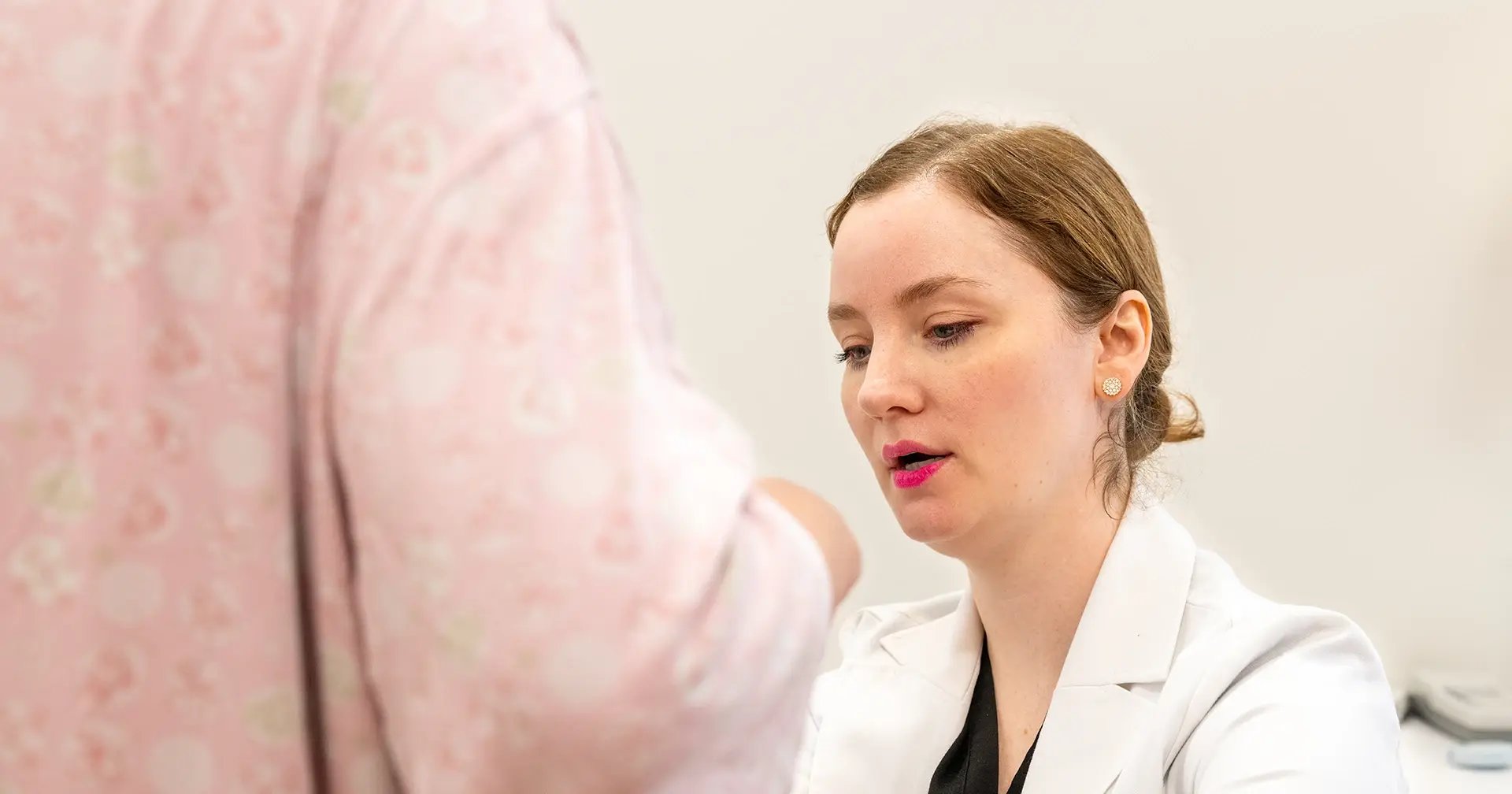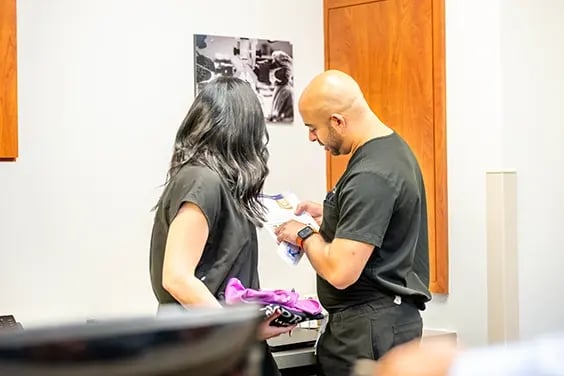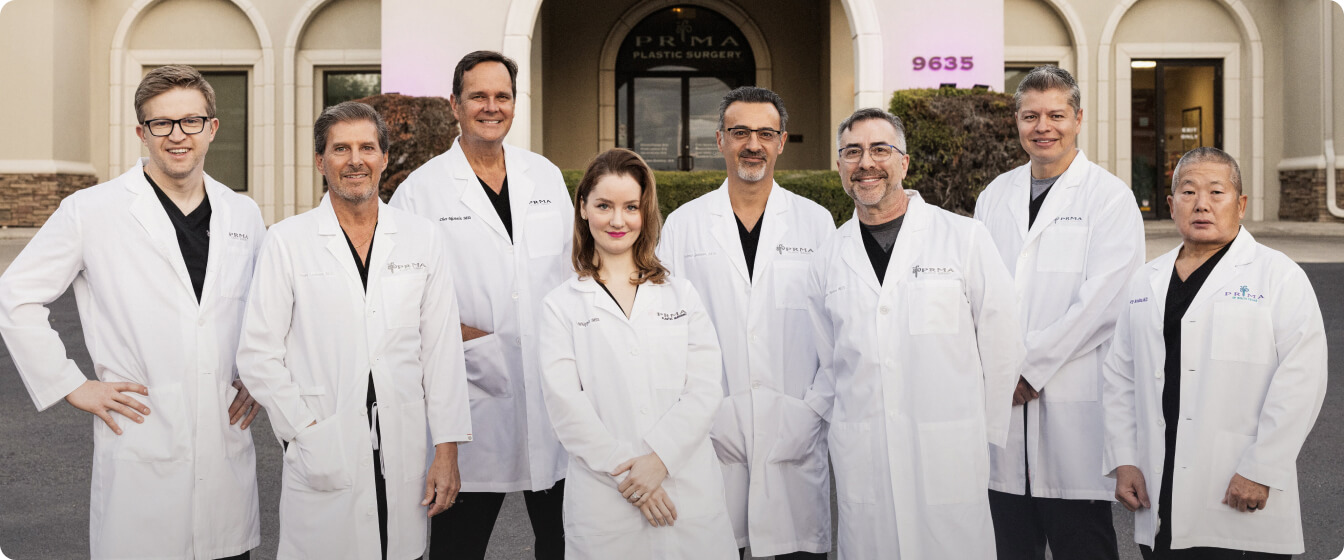
Hybrid Breast Reconstruction
What is Hybrid Breast Reconstruction?
If you want implants but desire a more natural look and feel than what implants alone can offer, then a hybrid breast reconstruction may hold the solution.
Hybrid breast reconstruction, also referred to as hybrid breast augmentation, combines the benefits of both implant-based and natural tissue reconstruction into one cohesive solution.
Many women choose hybrid breast reconstruction when they desire a more natural look and feel than implants can offer on their own, but may not be eligible—or may not prefer—to undergo full natural tissue reconstruction like a DIEP flap.
Key Information
- Combines natural tissue and implant for improved aesthetics and softness.
- Ideal for patients with thin or radiated skin where implant-only reconstruction may not be successful.
- It uses a smaller flap of natural tissue—often from the abdomen, thigh, or back—to add coverage over the implant.
- May reduce the risk of implant-related complications like rippling, capsular contracture, or implant exposure.
- It can enhance breast symmetry and contour, especially in revision or corrective cases.
- Offers a more natural look and feel than implant-only reconstruction.
- Less invasive than full autologous flap procedures, with shorter recovery in some cases.
- It can be performed as an initial reconstruction or as a revision after failed implant-based surgery.
What to Expect During Surgery
Hybrid breast reconstruction is typically performed under general anesthesia and may be done at the same time as your mastectomy (immediate reconstruction) or at a later date (delayed reconstruction).
During surgery, a small flap of your own natural tissue—often from the lower abdomen, thigh, or back—is microsurgically transferred to your chest. This tissue provides soft, healthy coverage over a breast implant, improving it’s support, appearance, and long-term durability.
Depending on your unique situation, surgery may last several hours and could involve one or both breasts. In some cases, hybrid breast reconstruction can also include advanced techniques to restore sensation in the reconstructed breast. sensation restoration techniques.

Before & After








Recovery Timeline
-
Week 1:With any breast reconstruction surgery, you'll spend the first few days recovering in the hospital, where we monitor your flap and implant closely to ensure proper healing. You'll have surgical drains in place, and it’s normal to feel sore, swollen, and tired.
-
Week 2:By the second week, most patients have returned home and are gradually increasing light activity. You’ll continue caring for your drains (if still in place), attend your first post-op follow-up, and begin to feel more mobile each day.
-
Week 3-4:Many patients begin to feel significantly better. If healing is progressing well, drains are usually removed, and gentle stretching may be introduced. You may still need to avoid lifting, driving, or strenuous activity, but walking and light household tasks are typically safe and encouraged by this time.
-
Week 5-6:Energy levels continue to rise, and your body is adjusting well to the new breast shape. Mild soreness and swelling may persist, especially near the donor site or implant area, but daily activities become easier.


The Nation’s Destination for
Sensation Restoration
Am I a Candidate for Hybrid Breast Reconstruction?
Hybrid breast reconstruction isn’t the best fit for everyone. While it offers a unique blend of benefits from implants and natural tissue, candidacy depends on your anatomy, medical history, and reconstruction goals.
You may be a strong candidate for hybrid breast reconstruction if:
- You have thin or radiated chest skin and need added tissue coverage over an implant
- You want a more natural look and feel than implants alone can provide
- You’re not eligible or prefer not to undergo full flap (natural tissue only) reconstruction
- You’re seeking revision of a previous implant reconstruction
- You have adequate donor tissue in areas like the abdomen, thigh, or back
- You want to reduce the risk of implant-related complications (like rippling or capsular contracture)
- You’re healthy enough for a longer surgery involving both microsurgery and implant placement
- You’re looking for a customized approach that balances aesthetic goals with recovery considerations
Find Your Surgeon
Will Insurance Cover a Hybrid Breast Reconstruction?
In most cases, insurance will cover a hybrid breast reconstruction. Under the Women’s Health and Cancer Rights Act (WHCRA), all group health plans and insurers that cover mastectomy are also required to cover breast reconstruction procedures, including hybrid breast reconstruction.
At PRMA, our team works closely with patients and insurance providers to verify coverage and maximize benefits.
For more information, visit [Insurance FAQs] in the patient resource center.

Preparing for Surgery
Learn more about:




